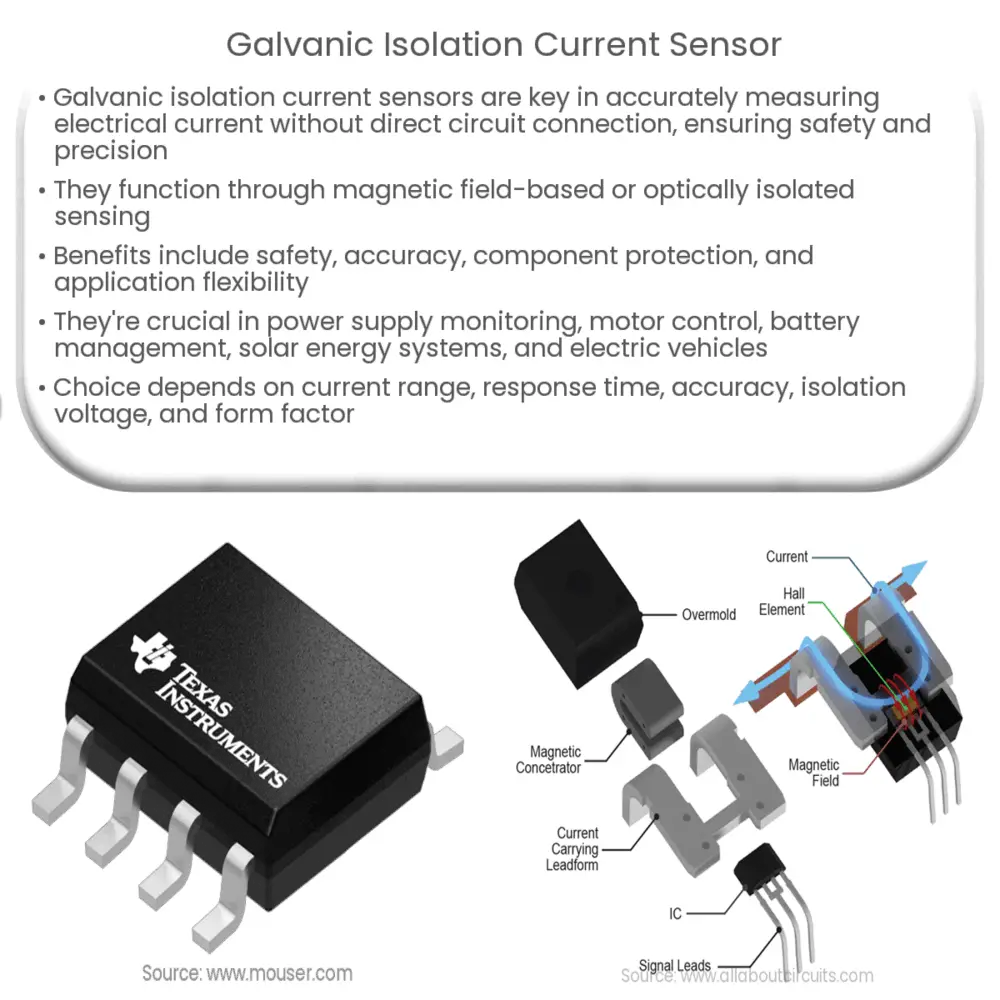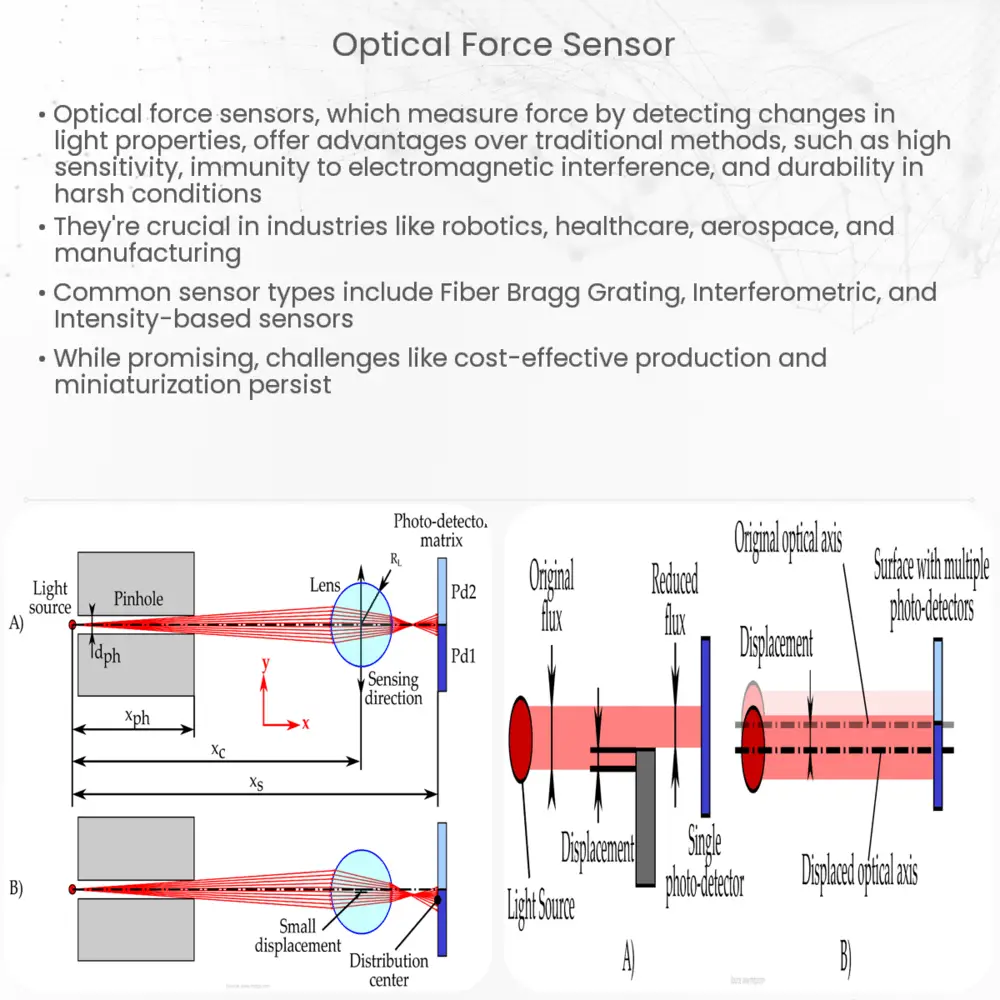Galvanic isolation current sensors accurately measure circuit currents while ensuring safety, protecting electronics, and preventing interference.

Galvanic Isolation Current Sensor: An Overview
In the world of electrical engineering, current sensing is an essential process that helps monitor and control the flow of current in circuits. One such technology that has gained prominence for its effectiveness and reliability is the galvanic isolation current sensor. This article aims to provide an overview of this sensor, its working principle, advantages, and applications.
What is a Galvanic Isolation Current Sensor?
A galvanic isolation current sensor is a device that measures electrical current in a circuit without creating a direct electrical connection between the sensor and the circuit. This type of sensor utilizes a principle called galvanic isolation, which is the process of separating two electrical systems to eliminate direct current (DC) and unwanted alternating current (AC) paths. By isolating the sensing elements from the measured circuit, the galvanic isolation current sensor can prevent electrical interference and ensure accurate measurements while maintaining safety.
Working Principle of Galvanic Isolation Current Sensors
Galvanic isolation current sensors typically use one of the following techniques to measure current without a direct electrical connection: magnetic field-based sensing or optically isolated sensing.
Magnetic Field-based Sensing
In magnetic field-based sensing, a current-carrying conductor generates a magnetic field proportional to the current flowing through it. This magnetic field is detected by a magnetic sensor, such as a Hall-effect sensor or a current transformer, which converts the magnetic field into an electrical signal. This electrical signal can then be processed to determine the current value in the circuit. Since the sensing element and the circuit are not directly connected, this method provides galvanic isolation.
Optically Isolated Sensing
In optically isolated sensing, the current is measured using an optocoupler or an opto-isolator, which contains an infrared LED and a photodetector. The current flowing through the circuit modulates the light intensity of the LED, and the photodetector receives the light and converts it into an electrical signal. The output of the photodetector can then be processed to determine the current value in the circuit. This method also provides galvanic isolation, as the optical components are not electrically connected.
Advantages of Galvanic Isolation Current Sensors
Using galvanic isolation current sensors comes with several advantages:
- Safety: By isolating the sensing element from the measured circuit, the sensor ensures the safety of the operator and the equipment.
- Accuracy: Galvanic isolation helps prevent electrical interference, ensuring accurate current measurements.
- Protection: These sensors protect sensitive electronic components from voltage spikes and transient voltages, which can cause damage or malfunctions.
- Flexibility: Galvanic isolation current sensors can be used in a wide range of applications and are compatible with various types of circuits.
Applications of Galvanic Isolation Current Sensors
Galvanic isolation current sensors are used in a variety of applications across different industries. Some common applications include:
- Power supply monitoring: These sensors are used to monitor and control the current in power supplies and voltage regulators, ensuring stability and safety.
- Motor control: In motor control systems, galvanic isolation current sensors help regulate the current flow to maintain the desired speed, torque, and efficiency of the motor.
- Battery management: In battery management systems, these sensors monitor the charging and discharging currents to prevent overcharging, optimize battery life, and maintain safety.
- Solar energy systems: Galvanic isolation current sensors are used in solar inverters to measure and control the current flow between the solar panels, batteries, and the grid.
- Electric vehicles: These sensors play a crucial role in electric vehicle systems, where they monitor and manage the current flow between batteries, charging stations, and electric motors.
Considerations When Choosing a Galvanic Isolation Current Sensor
Before selecting a galvanic isolation current sensor for a specific application, several factors must be considered:
- Current range: The sensor should be able to accurately measure the expected range of currents in the application.
- Response time: The sensor’s response time should be fast enough to meet the requirements of the application, ensuring timely and accurate measurements.
- Accuracy: The sensor’s accuracy should be sufficient for the application, taking into account factors such as temperature drift and the influence of external magnetic fields.
- Isolation voltage: The sensor should provide adequate isolation voltage to protect against voltage spikes and transient voltages in the specific application.
- Size and form factor: The sensor should fit within the available space and be compatible with the mechanical constraints of the application.
Conclusion
Galvanic isolation current sensors are an essential technology in various industries, providing accurate current measurements while ensuring safety and protecting sensitive electronic components. By understanding the working principles, advantages, and applications of these sensors, engineers can make informed decisions when selecting the right sensor for their specific needs. With the continued advancement of this technology, galvanic isolation current sensors will continue to play a crucial role in the development of more efficient and safer electronic systems.



